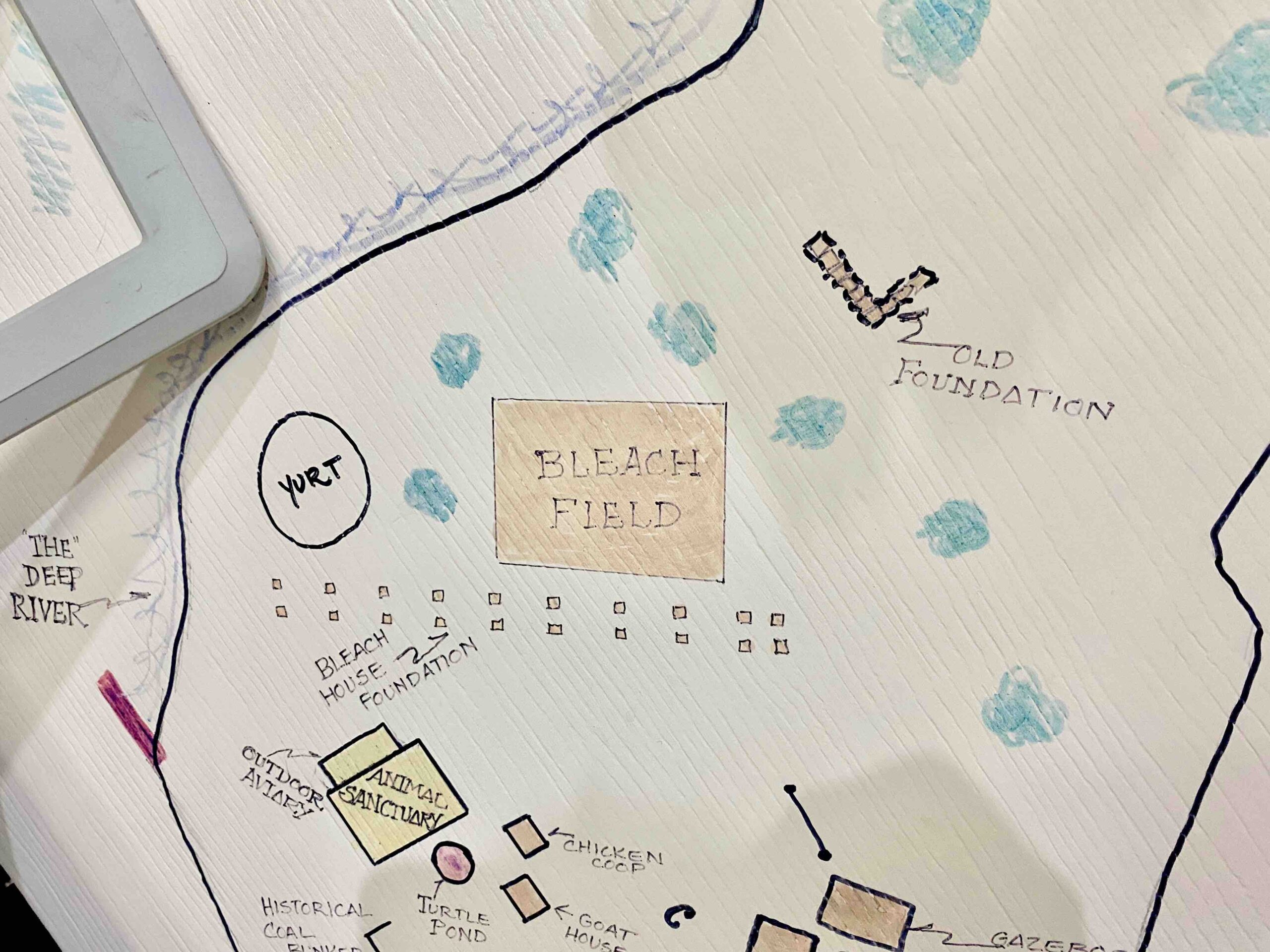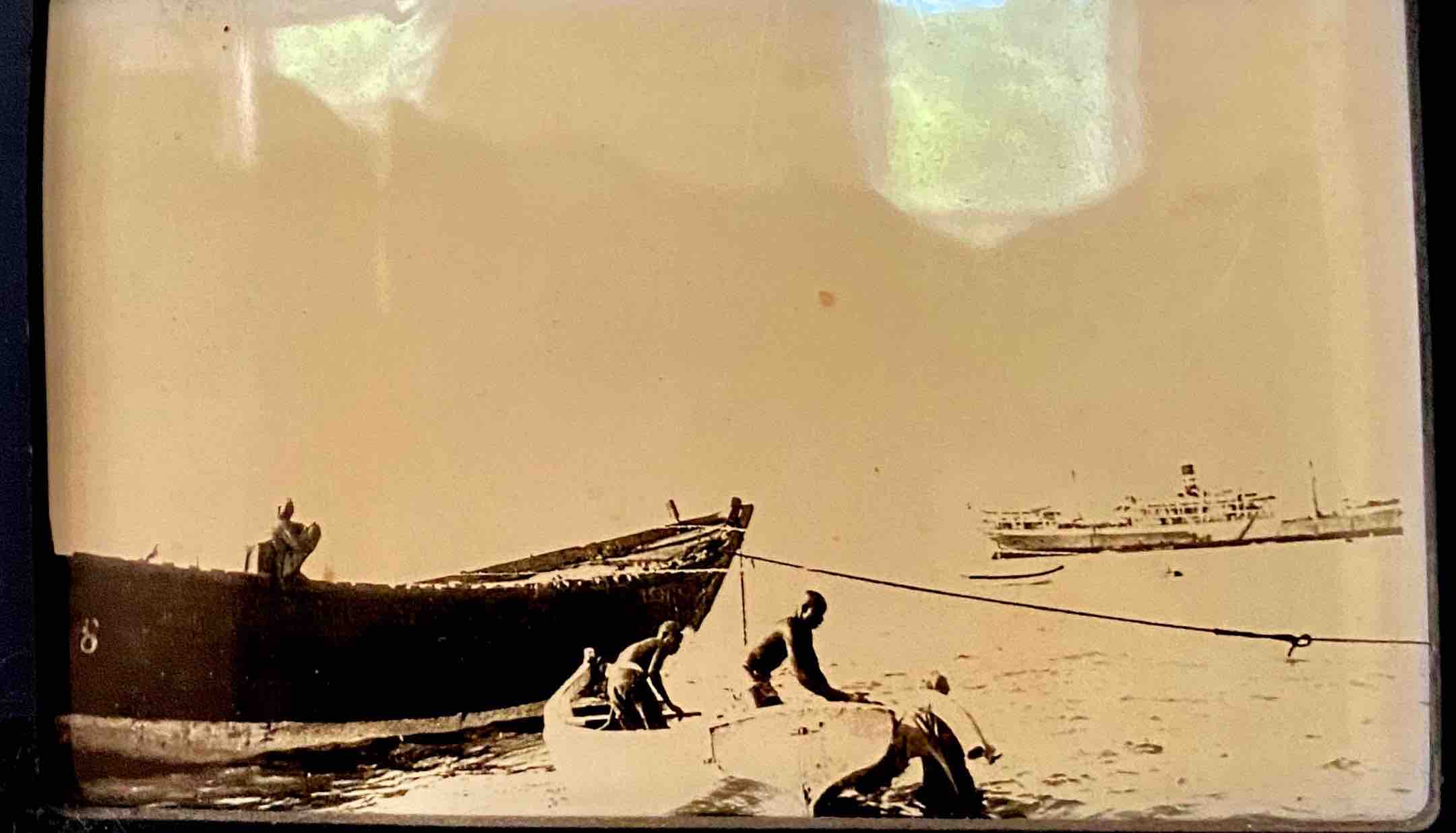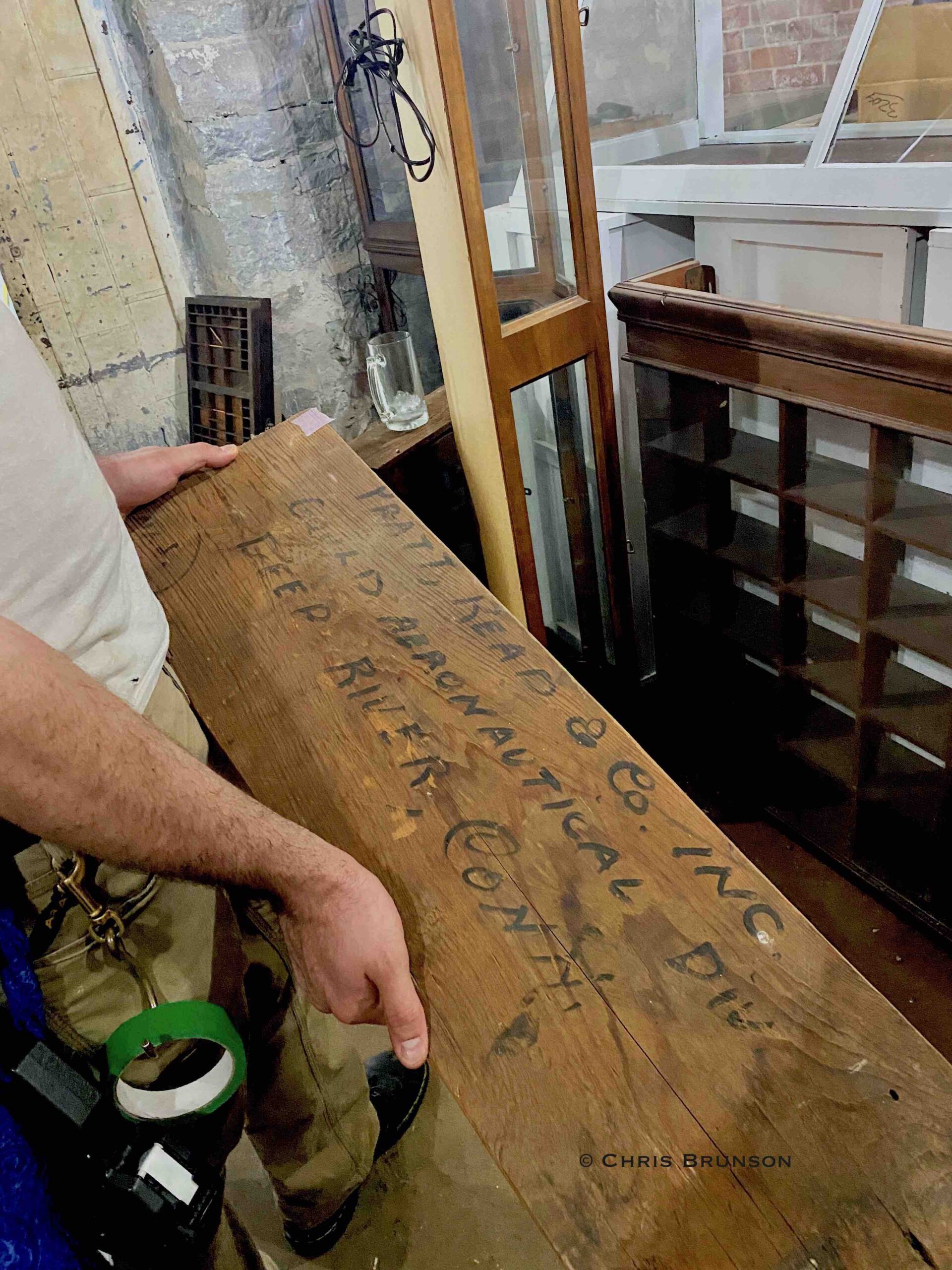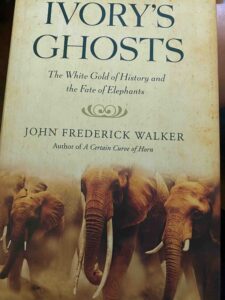Ivory To Sanctuary: PRP Building History, Tusks, Deep River Port
One continent to another. Choices made, then and now.
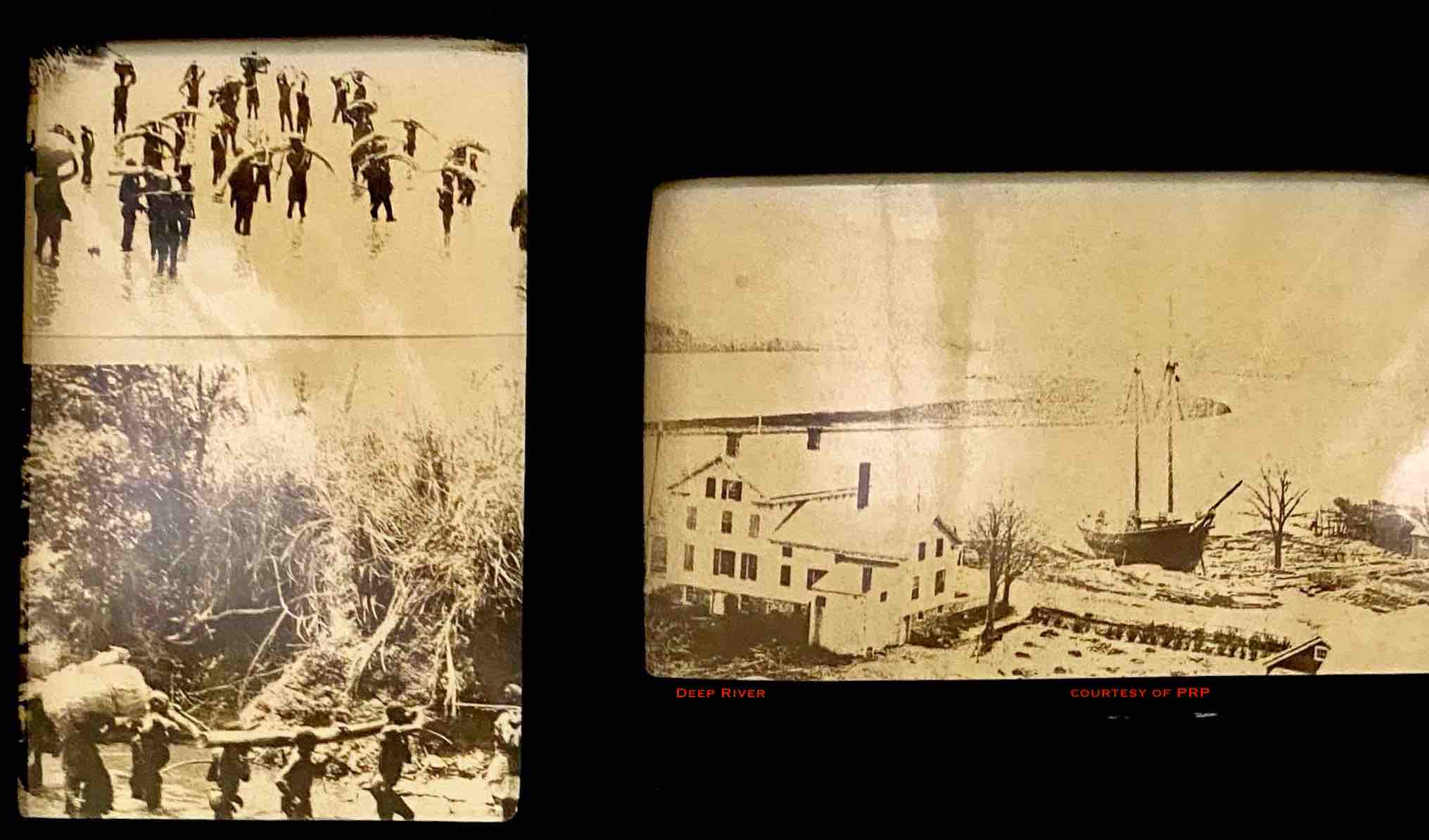
Left, tusks being transported in Africa. Right, the port of Deep River, Connecticut, North America. Detail, montage inside PRP.
Led by Pandemonium Rainforest Project (PRP) Ian Basilone, PRP manager and historian, let's go on a narrated tour through time. Chapters of life paging back and then forward. what is yet to unfold. Features many simply walk by and do not notice. Look up. Down. Notice, listen.
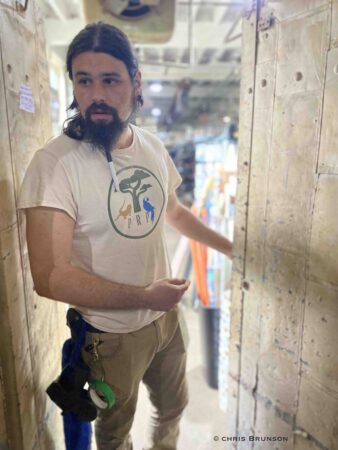
Ian Basilone, PRP manager and historian in the doorway of the museum room, a work in progress. For those who have objects and/or stories related, call to inquire about adding to the collections.
History that lives in this building now home to a thriving and much-loved business that funds a worthy goal — to shelter and care for animals (parrots, birds, reptiles, more). Because pets with long lives and noisy voices (some) are living beings not things. Home means love, care, consistency, food and shelter.
PRP components in Deep River, Connecticut include Pandemonium R3 (Recycle, Reuse, Repurpose) Thrift located in the former Pratt Read & Co., later Electric Soldering Iron Co. (ESICO, which moved to nearby Chester). The animals at Ashleigh's Garden. Growing ideas to connect to the community, region.
From Connecticut Mills: Architectural Description
“The 1856 wood frame factory building is one and a half stories with gable roof. One to two bleach houses, with southwestern facing glass elevations, were located to the north of the factory until c.1925. An ivory vault was located to the west on the other side of the head race until c.1936. The eastern engine shop and boiler house were built in 1911. According to town historian Rich Kalapos, as of 2016 the turn of the century turbine, rope-pulled elevator, and some machinery remain in place.”
There is no irony in the community's multi-layered business heritage to the once thriving ivory trade as both a maritime port and manufacturing center for such products as pianos, combs, more. However, the beauty of the setting belies the horror of how ivory from elephants is obtained, and at what cost in both human and elephant life. Banned worldwide in 1989, here's a relevant story via National Geographic as a video. Oh, people and their appetites.
“We are currently working towards building a large facility to house them all, a part of our non-profit organization The Pandemonium Rainforest Project. Please visit www.PandemoniumRainforestProject.org to learn more, see photos of our animals, and find out how you can help.” via http://www.ashleighsgarden.com/our-animals.html.)
Love this: “Meet Allison Sloane. From a very young age, Allison has always had a love for all animals and a passion for rescuing them. Throughout the years, she came to realize that reptiles and parrots are often overlooked; they are the forgotten souls of the animal world. She has over 30 years of experience working with reptiles, and more than 16 years working with parrots. For years she’s been doing outreach programs with the reptiles to engage and educate the community.”
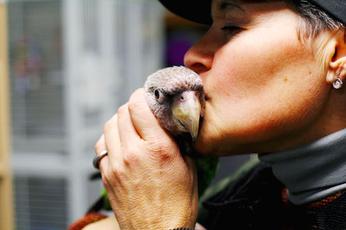
Allison Sloane and friend. Image from PRP, linked for more information about how to support the work.
“On top of everything she does, she’s also a successful florist who owns the flower shop, Ashleigh’s Garden. At Ashleigh’s Garden, there is a large, separate bird room that is home to 35 rescued parrots. A good portion of the day, as well as the profits from her business, go to caring for and supporting these birds.”
Light the light to vanquish darkness. Listen as Ian leads on. Hear the bell ring out from above.
Hidden features (to most) and architectural details, stories, what is now buried under the on-ramp to Route 9. How all connects to the local area and the world.
Thank you, Ian Basilone, PRP manager and historian, Deep River, CT. 🔔 pic.twitter.com/LJaMfV1lsj
— Moo Dog Press (@MooDogPress) June 30, 2023
Intertwined stories of slavery, trade, slaughter, wars and objects. A vault once full of valued tusks, emptied and buried under the upwards on-ramp to Route 9. (Will never travel this now without remembering.) A map with bleach fields and processes. Repurposed to create homes for critters, may it educate and enlighten visitors as the animals have a home, feed, life in the outdoors to stimulate these intelligent beings.
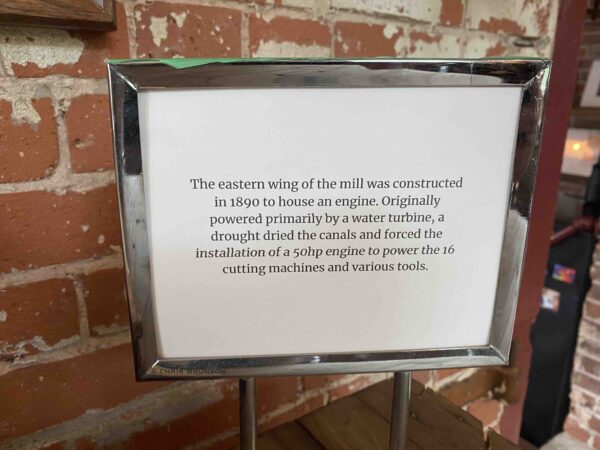
“The eastern wing of the mill was constructed in 1890 to house an engine. Originally powered primarily by a water turbine, a drought dried the canals and forced the installation of a 50 hp engine to power the 16 cutting machines and various tools.” More signage to interpret the history on site will be added as time allows.
Did you notice?
The green shades atop the lights outside? (Original.) The cupola, which must have stairs that lead up (actually stairs then a ladder). The colors chosen for the structure, windows replaced as needed, bricks carefully cleaned. Beauty, utility, thoughtfulness. And, yes, humor in some displays.
In the collections of the Smithsonian, this: Pratt, Read Corporation Records. Dates: 1839-1990 … 84 cubic feet, 106 boxes, 28 oversize folders. Archives Center, National Museum of American History.
“Records documenting Pratt, Read and Company; its early competitor and later partner, Comstock, Cheney and Company; and a number of predecessor, subsidiary and related companies. Other topics include the late 19th century African ivory trade and Pratt, Read's production of troop-carrying gliders during World War II.” Includes an image from Gould Aeronautical Division.
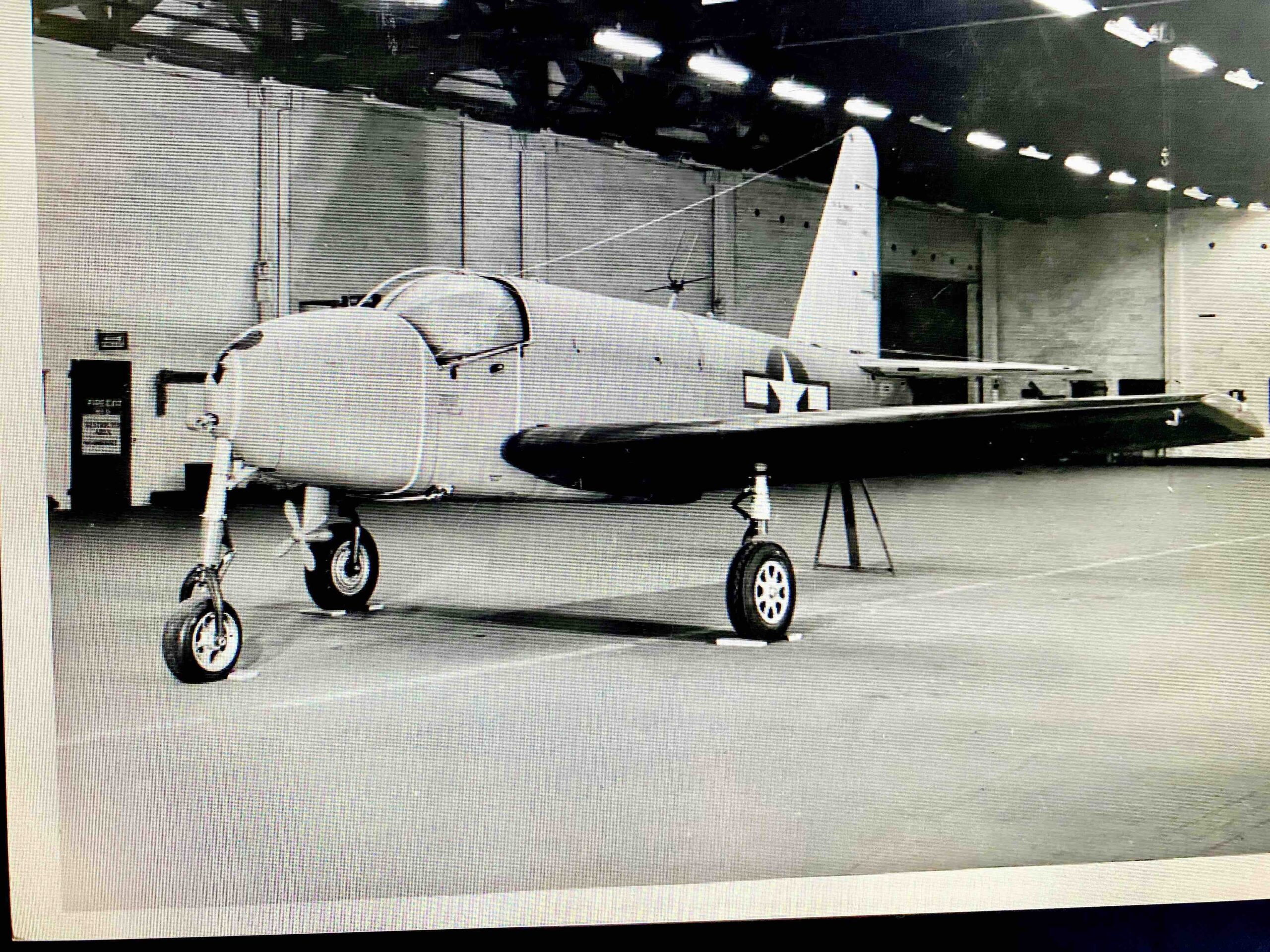
Gould Aeronautical Division
Collection Title: Pratt, Read Corporation Records
Image name: AC0320-0000003.tif
Contained within: /Public_Sets/NMAH/NMAH-AC/AC0320
Copyright: Unknown-Restrictions Possible
Repository: National Museum of American History, Archives Center
uan: NMAH-AC0320-0000003
And a related book that adds much to understanding Deep River, global business, human beings collecting things.
“A sheet of ivory, fourteen inches wide and *fifty-two feet* long, sawn from a single tusk, was sent by Julius Pratt and Company of Meriden, #Connecticut (one of the forerunners of Pratt, Read), in 1851 to the Great Exhibition at the Crystal Palace in London’s Hyde Park.”
📖… https://t.co/HyChPs6kHX pic.twitter.com/dR2rurtzM8
— Moo Dog Press (@MooDogPress) July 16, 2023
Finally, this documentary, viewed late at night after writing. Powerful stuff, stories. Connections across an ocean.
How we choose to remember. Seeing the beads found with burials stay with me. Recently watched and well worth review, A Story of Bones. How connected to the ivory trade and Deep River? The Middle Passage, the Transatlantic Slave Trade. All did not survive the journey.
Their bones speak to those who will listen.
PBS POV A Story of Bones “as Construction Environmental Officer for St. Helena's troubled airport project, Annina van Neel learns about an unmarked mass burial ground of an estimated 9,000 formerly enslaved Africans. Haunted by this historical injustice, she and African American preservationist Peggy King Jorde fight for their proper memorialization, exposing the UK's colonial past and present.”
Note: More to come about the connections between wildlife and Deep River (perhaps Mondays at the Griswold Inn to see about some traditional music). This story has been updated.

